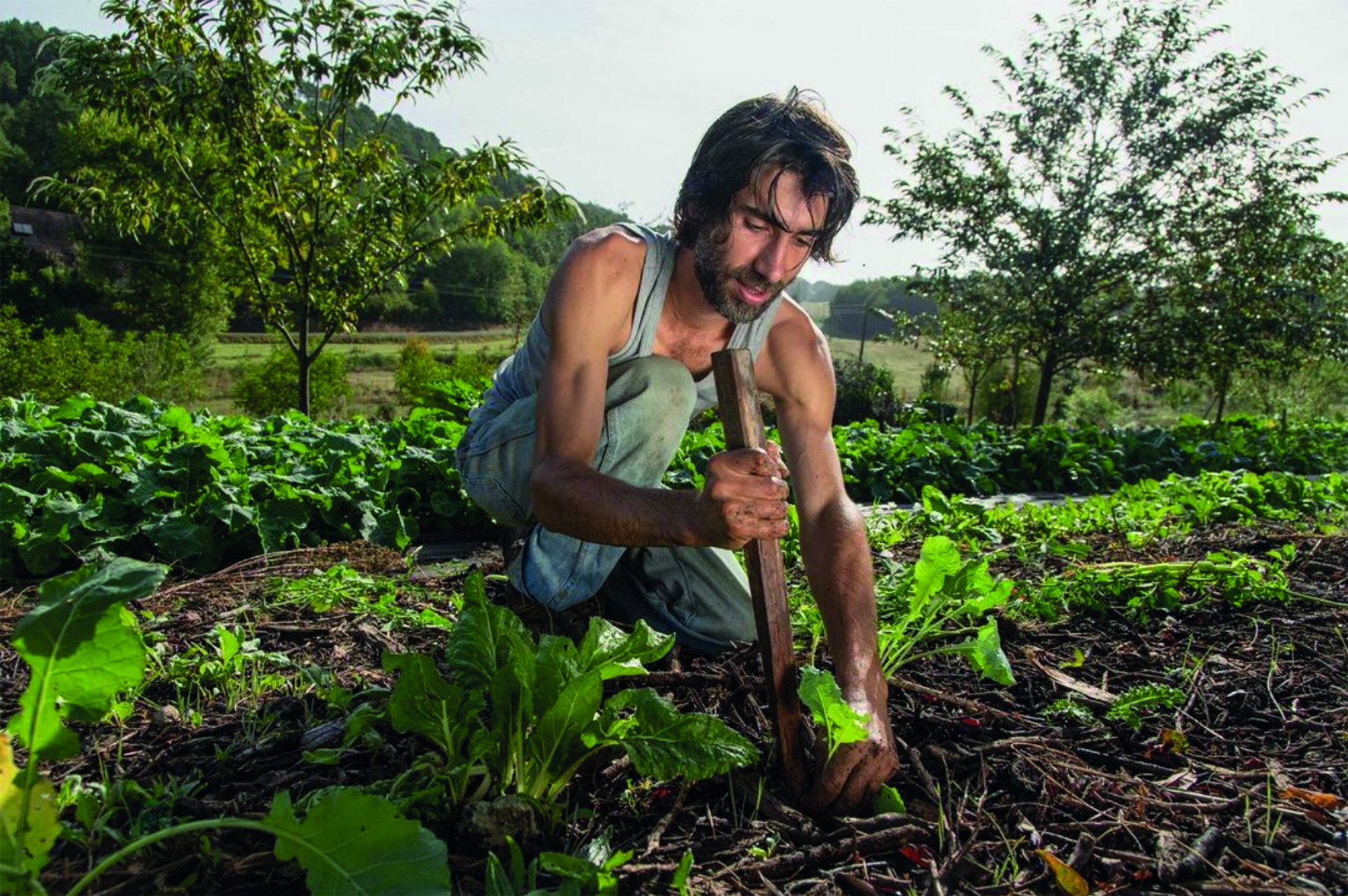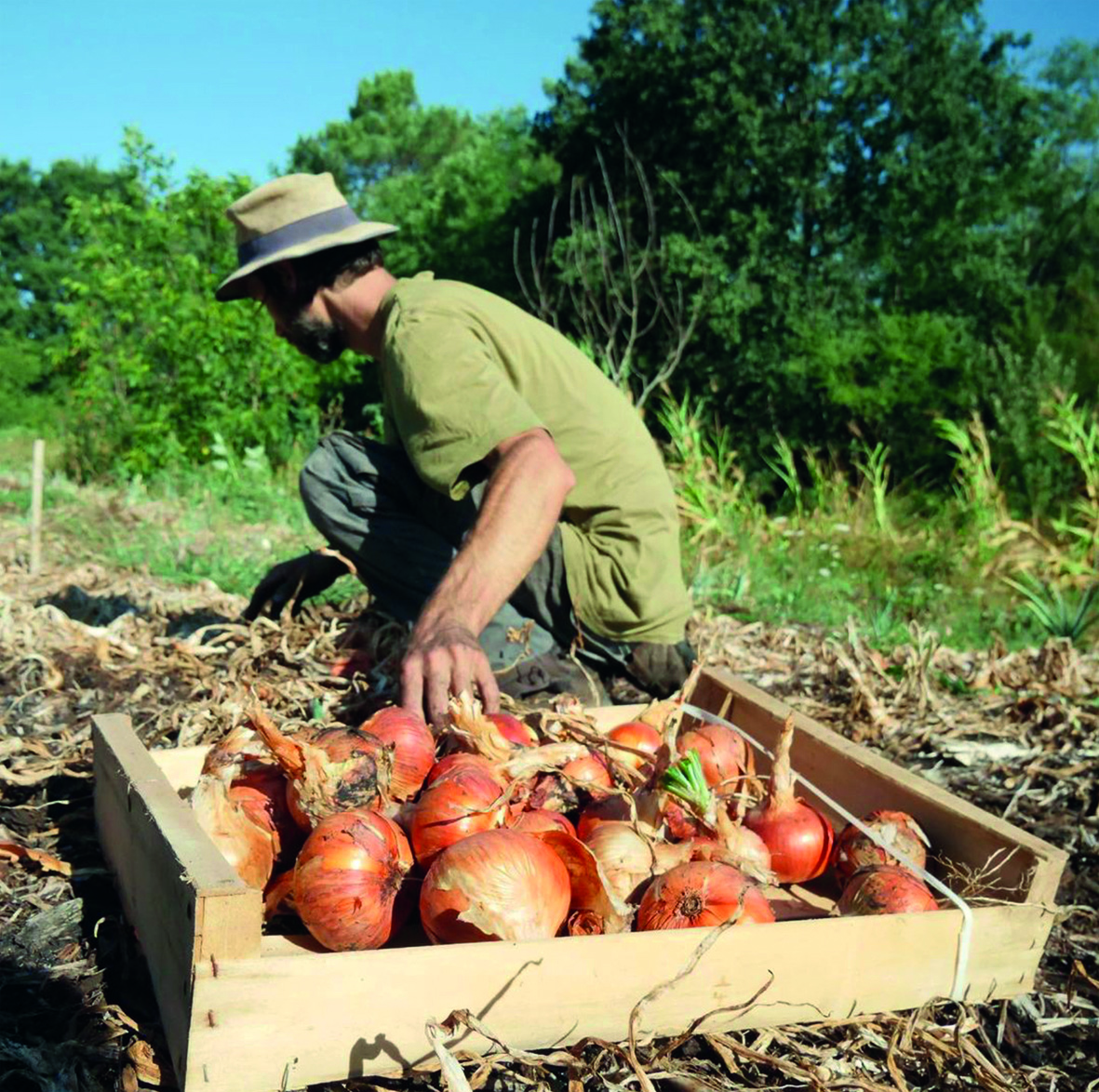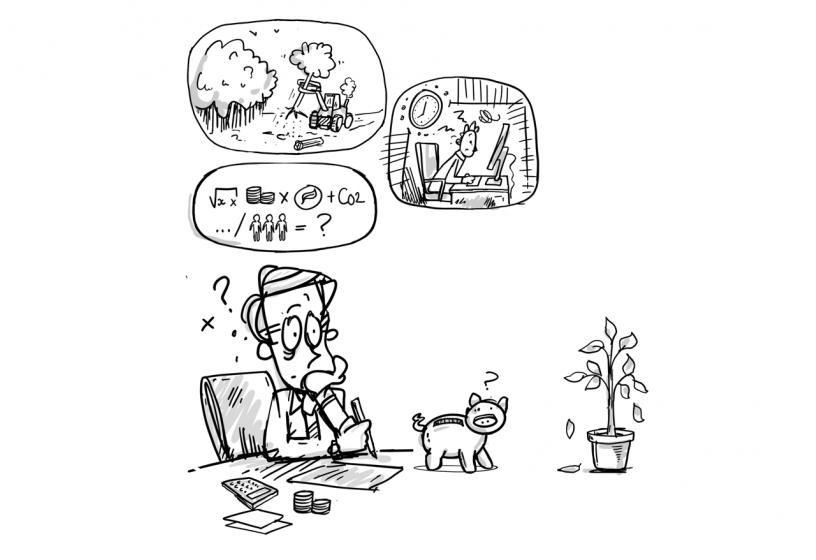Cagnolle, a model farm

Welcome to Cagnolle, a beautiful living soil vegetable farm in the heart of the Dordogne! Already at the cutting edge of agroecology, the farm has recently converted its balance sheet and profit and loss account to practices that are more respectful of nature and mankind. Explanations.
Benoît, a market gardener, has wanted to prove the relevance of his farm's sustainable commitment in figures for a while now. He contacted Fermes d'Avenir, an association that helps develop agroecological farms to improve the resilience of territories. As one of their unifying principles is to encourage a change of model through greater transparency of figures, it was with great interest that they embarked on the experiment with Benoît. The idea? To implement the CARE/TDL model in the farm's accounting.
Benoît liked the CARE tool right away for it is “meaningful and appears to be a way to reprogram our economic system so that it takes better care of the planet and our living conditions”. Dominique Loos, an agronomist by training and with long experience in the financial sector, accompanied the process. He went on site to follow Benoît during a typical working day. This gave him a good understanding of how the farm works, its environment, and the people who work there. Dominique and Benoît then worked on defining more precisely the assets, their desired level of preservation, and how to succeed in practice to keep them at that level. Four capitals were selected as types of natural capital (water, soil, biodiversity and atmosphere) and three as types of human capital (social, patrimonial and societal). This list is representative of the overall situation on the farm. To better understand how this has been integrated into the accounts, it is worth looking at two of these now measured areas: water capital and social capital.

Protecting blue gold
Two key principles are essential: no pollution and no overconsumption. Since the Cagnolle Farm does not use any phytosanitary products and does not have any intensive breeding, the water capital is not polluted and therefore does not require any investment at this level. On the other hand, a significant amount of water is required for the crops. Dominique and Benoît thus calculated the necessary investments over two years to limit the need for running water to a minimal level. One of the strengths of CARE, according to Benoît who considers that “giving a value to nature to take care of it is a paradox”. With CARE, “we don't try to give it a value, but to measure what is necessary to preserve it”. It is this amounof required investment which is then added to the assets and liabilities side of the balance sheet. In this case, this included building a rainwater harvesting system and increasing the frequency of manual weeding to reduce the need for crop irrigation. Following the classic straight-line depreciation principle, the water asset was thus depreciated by half the amount estimated at the end of the first period, one that would also constitute an expense just like in a traditional accounting system. On the other side of the balance sheet, the water capital is reduced by the amount of the measures implemented. This amount is also income for the water capital. The difference between the revenue and the expense then results in a loss or profit attributable to the water capital. In the case of water, a loss was incurred because the rainwater harvesting system could not be built. The water capital was therefore not preserved at the initially desired level.
Preserving the human aspect
Social capital depends on the well-being, working conditions, and remuneration of the farmers and woofing holidaymakers, many of whom pass through the area to discover the farm's methods. Estimating the desired level of preservation of this capital, therefore, seems much more subjective than for water capital, for instance. The calculations are therefore mainly based on interviews with the farmers and woofers, and depend mainly on the level of remuneration desired to lead a decent life. Once determined, the amount to preserve the social capital over 2 years is added to the assets and liabilities. Again, the assets are written down by half at the end of the period and the liabilities are reduced by the compensation provided and the costs incurred to improve working conditions. The amount of the depreciation is also an expense and the amount by which the liability is reduced is considered as income. This also shows a loss, as the income the farmers can afford is not commensurate with their efforts.

Net earnings
Once this exercise has been carried out on the seven defined assets and coupled with conventional financial accounting, the balance sheet and income statement can be prepared using the CARE method. Even if the income statement shows a loss, and contrary to what our analysis of the water and social capitals would suggest, the picture that emerges from these accounts is rather positive for the farm. As Benoît expected, the other natural capitals are rather well preserved, especially the soil capital which is largely improved thanks to the vegetable gardening techniques used. On the human capital side, the patrimonial and societal capitals are well preserved. This is due, on the patrimonial side, to the old buildings that Benoît has restored and maintained. For the social aspect, the result comes from the training offered and the positive impact of the farm's responsible approach on the neighborhood. However, the market gardeners are still far from being able to pay themselves an adequate remuneration, weighting down Ferme de Cagnolle’s results.
A promising affair
The Ferme de Cagnolle was able to get a lot out of this process. First of all, it confirmed Benoît and his colleagues in their committed choices since they were able to see, in figures, all the benefits that the farm's sustainable model has on its natural, heritage and societal environment. The farmer explains that a lot of effort is made to produce quality food while respecting the environment, but that this is not measured and valued in the conventional system. This was especially hurtful when people complained about the cost of his produce. With CARE, he now has a tool to illustrate these positive externalities.
This approach also reminds us of the importance of considering ourselves at the heart of an environmental and social ecosystem, and of understanding strategic factors that were not sufficiently considered until now and that is nevertheless essential to the resilience of the operation. For Benoît, implementing CARE “allows us to target areas for improvement, to highlight externalities and to make better trade-offs with available resources. In short, it is a much more complete management tool than traditional accounting. Dominique agrees. For him, the implementation of CARE accounting “gives more perspective on the entire farm process”. He also reminds us of the need to “count what really counts, where it counts”.
Dominique and Benoît are working hard to convince other farms to adopt this method. They organise training sessions on this new sustainable compatibility and hope to create a ripple effect. What are the needed prerequisites? It is very simple: the authenticity of the approach! As Dominique says, “CARE only works if you are sincere in your approach. Sincerity is a prerequisite for its application”.
To be read also in the dossier "The right account" :


